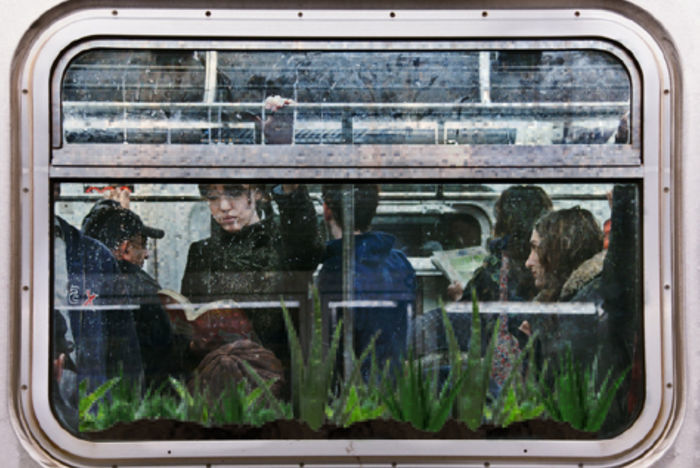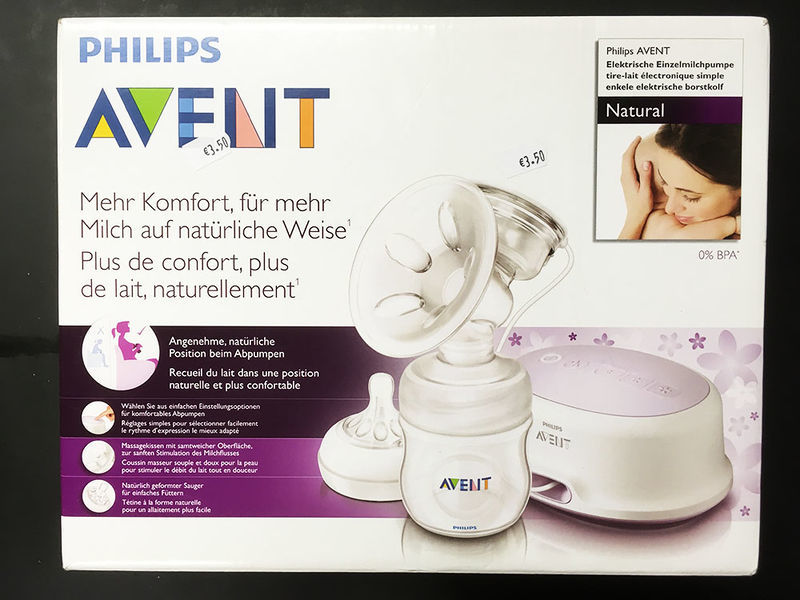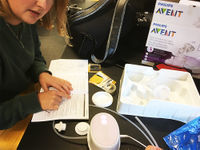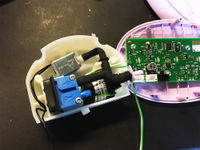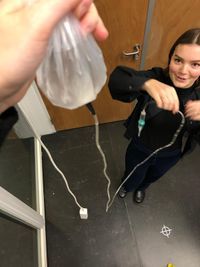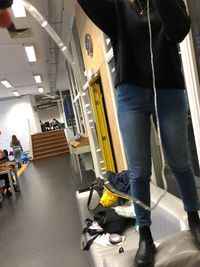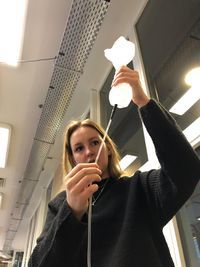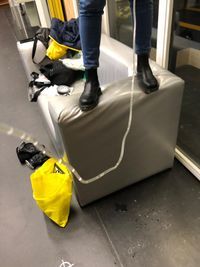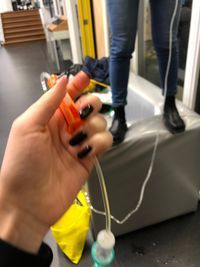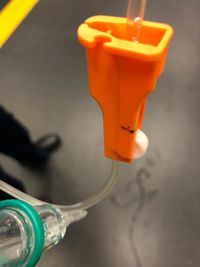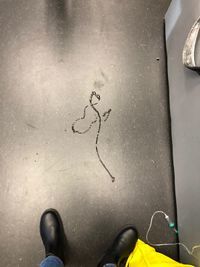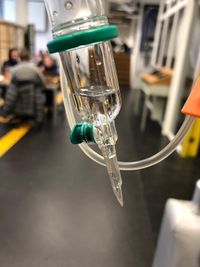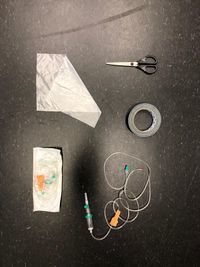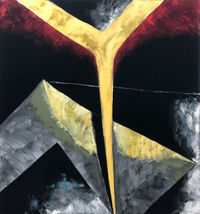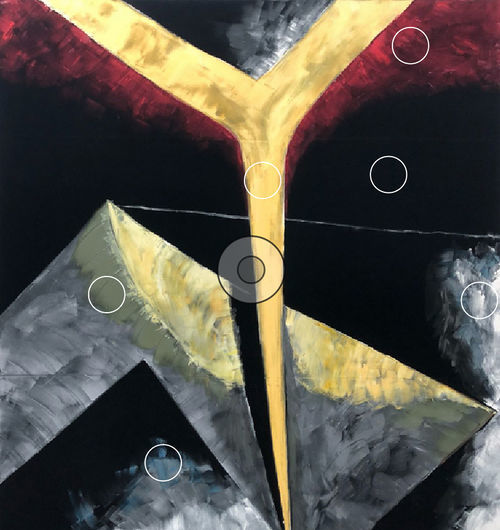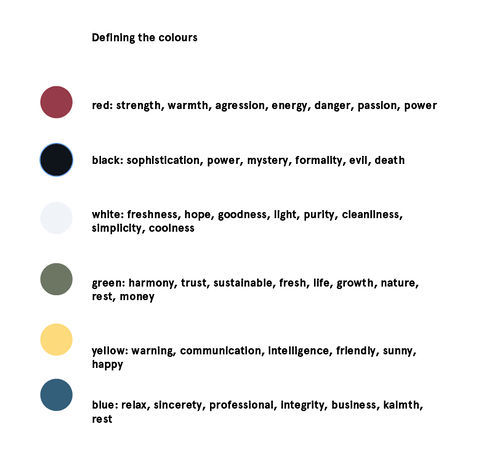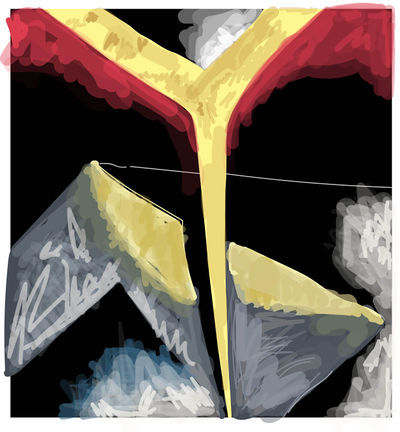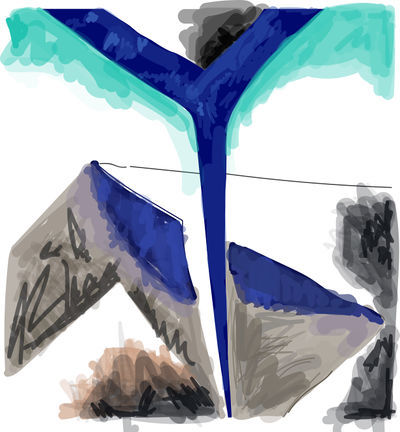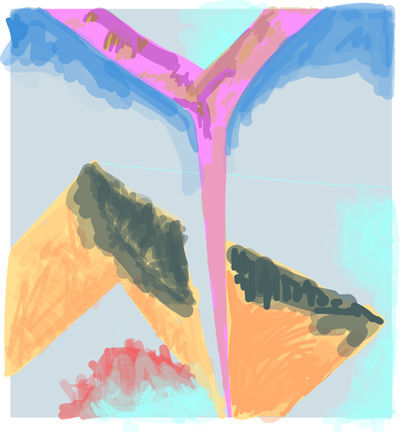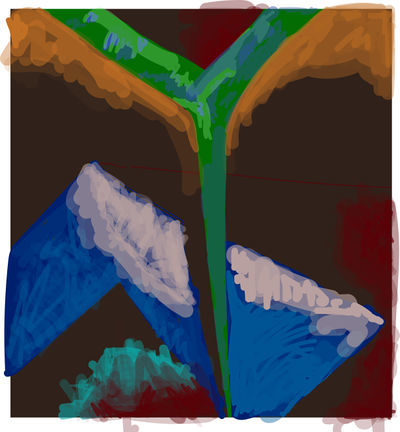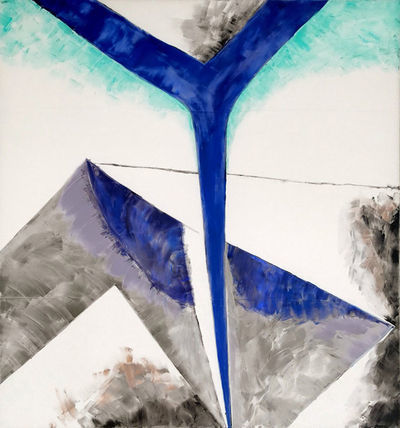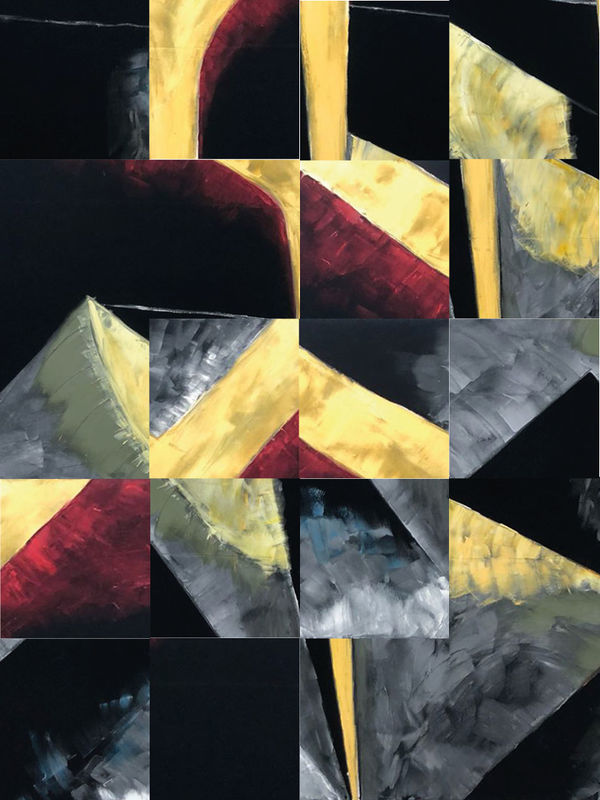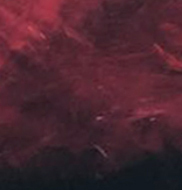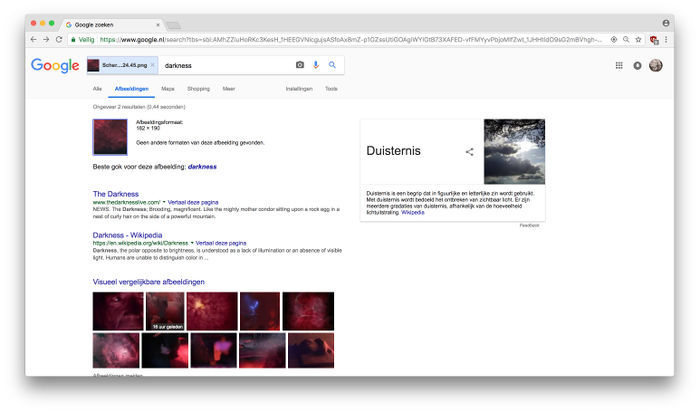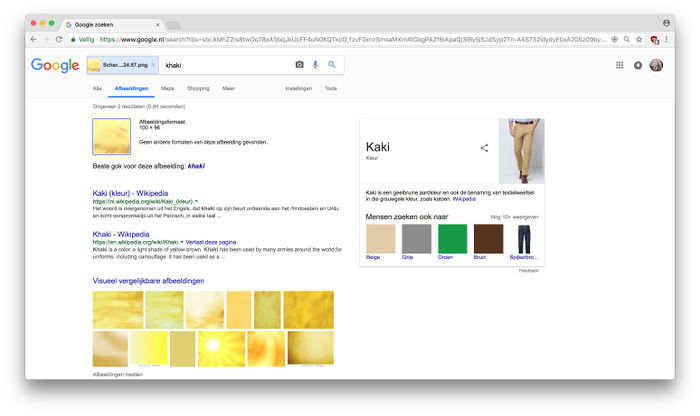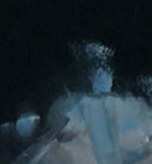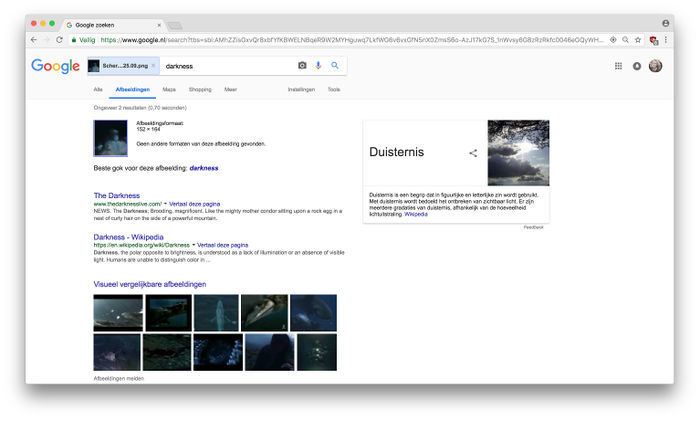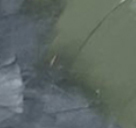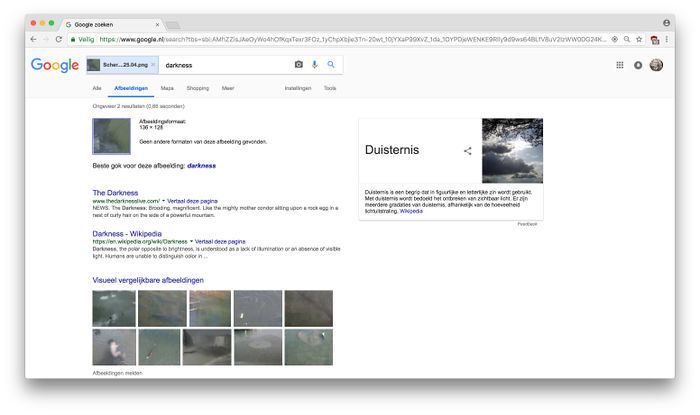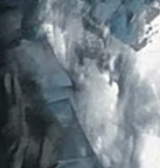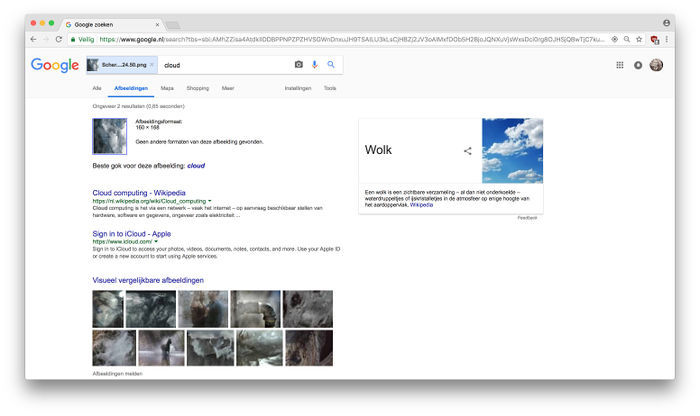Difference between revisions of "User:LianneVerkerk"
| (48 intermediate revisions by the same user not shown) | |||
| Line 1: | Line 1: | ||
| − | [[File:rechtgezet.jpg|200px|thumb|left| | + | Lianne Verkerk <br><br>0922639@hr.nl <br><br>Graphic Design |
| + | |||
| + | ==Year 3== | ||
| + | |||
| + | ===Critical making exercise=== | ||
| + | |||
| + | '''THE SELFIEBOOTH PROJECT''' | ||
| + | |||
| + | |||
| + | [[File:selfiebooth.jpg|700px]] | ||
| + | |||
| + | Highlight the elegant errors | ||
| + | and beautiful mistakes found | ||
| + | in selfies using fabric to design | ||
| + | this object as a wearable or soft | ||
| + | thing. | ||
| + | |||
| + | For the full project, take a look at the PDF file below: | ||
| + | |||
| + | >> [[file:Iphone_Booth_Manual.pdf|200px|thumb|left| iPhone booth manual]] << | ||
| + | |||
| + | |||
| + | |||
| + | ---- | ||
| + | |||
| + | ===Cybernetic prosthetics=== | ||
| + | |||
| + | '''ALWAYS GREEN, NEVER GRUMPY''' | ||
| + | |||
| + | |||
| + | [[File:green.jpg|700px]] | ||
| + | |||
| + | |||
| + | |||
| + | a project inspired by the condensation cube. | ||
| + | |||
| + | for more information see the PDF file below | ||
| + | |||
| + | >> [[file:Alwaysgreen-manual1.pdf|200px|thumb|left| iPhone booth manual]] << | ||
| + | |||
| + | |||
| + | ---- | ||
| + | |||
| + | ===From devices to systems=== | ||
| + | |||
| + | |||
| + | Breast pump /sucking device | ||
| + | |||
| + | |||
| + | |||
| + | [[File:Br1.jpg|800px]] | ||
| + | |||
| + | |||
| + | This project i have worked together with my classmate Ricardo Abbaszadeh. We chose a breast/pump sucking device. Partly because it is a bit of a funny product, but also because it is a product where we had no clue off what would be happening inside. Therefore we wanted to figure that out. | ||
| + | |||
| + | We took the machine apart and made pictures of the different steps we took to come to the inside of the product. With each step we came a little bit closer to understanding how the air flow would work. | ||
| + | |||
| + | |||
| + | |||
| + | [[File:Br2.jpg|200px]] | ||
| + | Step 1: Opening up the breast pump | ||
| + | |||
| + | [[File:Br3.jpg|200px]] | ||
| + | Step 2: Gathering information | ||
| + | |||
| + | [[File:Br4.jpg|200px]] | ||
| + | Step 3: Experimenting: what would happen if we change these cirquits? | ||
| + | |||
| + | [[File:Br5.jpg|200px]] | ||
| + | Step 4: Opening up the pump | ||
| + | |||
| + | [[File:Br6.jpg|200px]] | ||
| + | Step 5: The final stage of the opening up: the motor behind the pump | ||
| + | |||
| + | |||
| + | |||
| + | ---- | ||
| + | |||
| + | ===FINAL PROJECT=== | ||
| + | |||
| + | This digital craft project is in addition to my major 3.1 project "Flectere". | ||
| + | With this assignment you had to create a tool which my colleague designers could use in any inspiring way. | ||
| + | My tool includes water on a mirror, and therefore created a morphed image of any original image. | ||
| + | The designer had to create the morph him or herself with their finger in the water. | ||
| + | With my digital craft prototype i've made a system that once in a while drips a water drop on the water mirror. | ||
| + | Therefore the designer doesn't have to use their hands but the dripper does it for you. | ||
| + | |||
| + | [[File:prot1.jpeg|200px]] | ||
| + | |||
| + | [[File:prot2.jpeg|200px]] | ||
| + | |||
| + | [[File:prot3.jpeg|200px]] | ||
| + | |||
| + | [[File:prot4.jpeg|200px]] | ||
| + | |||
| + | [[File:prot5.jpeg|200px]] | ||
| + | |||
| + | [[File:prot6.jpeg|200px]] | ||
| + | |||
| + | [[File:prot7.jpeg|200px]] | ||
| + | |||
| + | [[File:prot9.jpeg|200px]] | ||
| + | |||
| + | [[File:prot8.jpeg|200px]] | ||
| + | |||
| + | |||
| + | ---- | ||
| + | |||
| + | ==Year 2== | ||
| + | |||
| + | ===Julian Schnabel - Abstract Painting=== | ||
| + | |||
| + | [[File:rechtgezet.jpg|200px|thumb|left|Abstract Painting - Julian Schnabel ]] | ||
Abstract Painting (From The Huge Wall Symbolizing Fate’s | Abstract Painting (From The Huge Wall Symbolizing Fate’s | ||
| Line 5: | Line 117: | ||
die de ontoegankelijkheid van het noodlot symboliseert)) | die de ontoegankelijkheid van het noodlot symboliseert)) | ||
| − | Julian Schnabel (in 1980) | + | '''Julian Schnabel (in 1980)''' |
Net als bij het rode schilderij gebruikt Schnabel geen schilderslinnen maar fluweel als ondergrond. Het zorgt voor een intens zwart waartegen de geschilderde partijen bijna lichtgevend afsteken. Hoewel hij het een abstract werk noemt, geeft de schilder in de ondertitel zijn inspiratiebron aan: een illustratie in een boek over vroege Duitse film, een shot uit Der müde Tod van Fritz Lang, waar een vrouw haar dorpsgenoten ziet verdwijnen in een ondoordringbare muur. | Net als bij het rode schilderij gebruikt Schnabel geen schilderslinnen maar fluweel als ondergrond. Het zorgt voor een intens zwart waartegen de geschilderde partijen bijna lichtgevend afsteken. Hoewel hij het een abstract werk noemt, geeft de schilder in de ondertitel zijn inspiratiebron aan: een illustratie in een boek over vroege Duitse film, een shot uit Der müde Tod van Fritz Lang, waar een vrouw haar dorpsgenoten ziet verdwijnen in een ondoordringbare muur. | ||
| Line 12: | Line 124: | ||
---- | ---- | ||
| + | ===Research artikelen=== | ||
| + | Artikelen research Julian Schnabel: | ||
| + | [[File:Julian_Schnabel_versie2_eind--klein.pdf]] | ||
| − | |||
| − | |||
| − | + | ---- | |
| + | |||
| + | |||
| + | ===Assignment questions=== | ||
| + | |||
| + | '''3 key words that sum up the meaning of the work''' | ||
| + | infinite black, | ||
| + | texture, | ||
| + | depth | ||
| + | |||
| + | |||
| + | '''3 textual quotes you have found that are interesting while investigating your work''' | ||
| + | |||
| + | “In an age when originality is dead and authenticity is considered a relic of the past, his paintings are Romantic throwbacks – bigger, more comforting versions of the real thing.” | ||
| + | |||
| + | “He is credited with playing an important role in bringing about “the return of painting” after painting had been declared “dead”“ | ||
| + | |||
| + | “The problem with Schnabel’s work is that his marks and actions are made by someone who is easily satisfied by everything he does, which makes what he does an inadvertent parody of genius.“ | ||
| + | |||
| + | |||
| + | '''3 textual lies you have made up that make the work more interesting''' | ||
| + | “His passion for painting on velvet all started while accidentally put a stain on the window curtains, from there he began to | ||
| + | experiment.” | ||
| + | |||
| + | |||
| + | “Before deciding if the velvet is really usuable, he wrapped himself with full body in the fabric and crawled on the floor, just to know for sure if the texture was the way he wanted it to be.” | ||
| + | |||
| + | |||
| + | “The painting is part of a bigger whole, there are 10 other mysterious paintings all over the world and if you combine those in a puzzle there is a hidden typographical message in the image.” | ||
| + | |||
| + | |||
| + | ---- | ||
| + | |||
| + | ===Colour research=== | ||
| + | |||
| + | [[File:Met cirkels.jpg|500px]] | ||
| + | [[File:kleuren.jpg|500px]] | ||
| + | |||
| + | |||
| + | |||
| + | ---- | ||
| + | |||
| + | ===Illustrator experimenten=== | ||
| + | |||
| + | [[File:illucopy.jpg|400px]] | ||
| + | [[File:illucopynegatief.jpg|400px]] | ||
| + | [[File:kleuren-illucopy.jpg|400px]] | ||
| + | [[File:negatiefkleuren-illucopy.jpg|400px]] | ||
| + | [[File:rechtgezet-negatief2.jpg|400px]] | ||
| + | |||
| + | |||
| + | ---- | ||
| + | |||
| + | ===Printed collage=== | ||
| + | |||
| + | [[File:puzzel collage - printmimaky.jpg|600px]] | ||
| + | |||
| + | |||
| + | ---- | ||
| + | ===Willekeurig online onderzoek=== | ||
| + | |||
| + | ''Gebruikmaken van een digitaal medium zoals Google Images om een willekeurig verloop van onderzoek te ontwikkelen. Uitkomsten waar ik geen directe invloed op heb.'' | ||
| + | |||
| + | |||
| + | |||
| + | [[File:donkerrood.jpg|300px]] | ||
| + | [[File:donkerrood2.jpg|700px]] | ||
| + | |||
| + | |||
| + | [[File:geel.jpg|300px]] | ||
| + | [[File:geel2.jpg|700px]] | ||
| + | |||
| + | |||
| + | [[File:blauw.jpg|300px]] | ||
| + | [[File:blauw2.jpg|700px]] | ||
| + | |||
| + | |||
| + | [[File:groen.jpg|300px]] | ||
| + | [[File:groen2.jpg|700px]] | ||
| + | |||
| + | |||
| + | [[File:wit.jpg|300px]] | ||
| + | [[File:wit2.jpg|700px]] | ||
| + | |||
| + | |||
| + | |||
| + | ---- | ||
| + | |||
| + | |||
| + | ===Statement=== | ||
| + | '''Digital Craft statement''''' | ||
| − | + | Voorafgaand aan deze practice was ik een beetje sceptisch of zelfs misschien angstig. Buiten het feit dat ik heel erg moest omschakelen vanaf vrij streng les te krijgen met opgegeven opdrachten naar autonoom toe. Ook omdat het Digital Crafts heet wekte ik voor mijzelf heel erg de indruk dat mijn digitale skills heel erg indrukwekkend moesten zijn, en in bijvoorbeeld coderen ben ik heel erg geïnteresseerd maar ben ik desondanks wel erg slecht. Gaandeweg door het project heen merkte ik dat ik in het begin inderdaad toch last had van het deel zelfstudie. Er was immers zo weinig les dat ik niet helemaal kon vastgrijpen wat er aan de hand was. Uiteindelijk is dat wel gaan werken en moest ik er gewoon in komen. | |
| − | + | Ik vond het fijn dat deze practice heel erg gebaseerd is op een methode van werken, en dus denk ik dat mijn kracht juist ligt in het combineren van de mogelijkheden tussen digitaal en analoog. Digitaal hoeft daarin natuurlijk ook niet gelijk het meest technische/ingewikkelde te zijn wat er is. Ik denk juist dat het contrast en het experimenteren met deze mogelijkheden en methodes juist karakter aan een project kan geven, in ieder geval een toon van karakter waar ik wel naar streef om te vinden in een project. | |
| − | + | In deze practice module moet ik eerlijk toegeven dat ik niet het meest digitale wat er mogelijk is ben gaan ontdekken, wat dat betreft heb ik meer analoog gewerkt met een toevoeging van digitaal. Voor andere projecten zou ik de grens hierin wel meer willen opzoeken en mijzelf ook meer willen uitdagen in wat ik kan behalen. | |
| − | |||
| − | In | ||
| − | |||
| − | + | ---- | |
| − | + | ===Reflective dossier=== | |
| − | |||
| − | |||
| − | + | '''''** Mijn reflective dossier deel over de practice Digital Crafts **''''' | |
| − | + | Digital Crafts // Autonomous practices | |
| − | + | Als 2e practice wist ik dat ik een van de autonomous practices wilde kiezen. Voor Willem de Kooning heb ik mbo graphic design gedaan, waarbij de focus al heel erg commercieel is. Natuurlijk is dit op wdka anders, maar toch leek het mij een interessante uitdaging om autonoom te proberen. | |
| − | + | Digital Crafts trok mij wel, met name door de combinatie van analoog en digitaal te werk gaan. Dit is een methode die ik in voorafgaande projecten ook al erg interessant vond. | |
| − | + | Bij de assignment Fantastic Forgeries was het de bedoeling dat ik een werk uit het Boijmans koos om een kopie en een appropriation werk van te maken. Na lang struinen en heel lang te twijfelen heb ik gekozen voor “Abstract Painting” van Julian Schnabel. Dit werk is een schildering op zwart fluweel. Door het zwarte fluweel lijken de kleuren van de verf van de stof af te kaatsen, het zwart is op een bepaalde manier “extra zwart”. Daardoor trok het mij gelijk. Plus dit was ook wel een kenmerk waar ik wel mee kon experimenteren. | |
| − | + | ||
| + | Voor de kopie ben ik juist verschillende dingen gaan proberen. In eerste instantie begon ik met (ongeveer) dezelfde kleuren ook te verven op fluweel stof. Achteraf ben ik meer digitale elementen gaan proberen. Zoals de schildering over te maken in Illustrator, en deze op deze manier juist zo te ontleden per laag. Ook heb ik juist het fluwelen materiaal vervangen door te printen op een ander materiaal: een soort rubber en een metalen/aluminium plaat. Dit brengt ook wel een verschillend resultaat teweeg. | ||
| + | |||
| + | Voor de appropriation liep ik een beetje vast in wat allemaal mogelijk was, uiteindelijk heb ik het teruggeschroefd naar de basis en gekeken naar de kleuren van het schilderij. Hier heb ik verschillende screenshots van gemaakt en met de hulp van google images search een database opgesteld van afbeeldingen die volgens een digitaal medium op deze kleuren lijken. | ||
| + | |||
| + | Inspiratie: studio moniker, het niet in de hand hebben van bepaalde resultaten en daarmee tot een willekeurig eindresultaat komen. | ||
| + | |||
| + | Willem Popelier: gebruik van andermans foto’s, in feite heb je daar ook geen invloed op en is het een kwestie van aankijken wat je met deze gegevens dan zelf kunt creëeren. | ||
| + | |||
| + | Om heel eerlijk te zijn denk ik dat Digital Crafts mij wel zeker trekt en interesseert. Juist omdat dit een methode van werken is die je altijd op een manier kan implementeren in je projecten. Wat ik wel lastig vind om echt goed een oordeel te kunnen veilen is dat er weinig lessen waren. Juist omdat de omschakeling van Area’s in decline naar Digital Crafts voor een groot verschil zorgden. Hierdoor voelde het toch alsof ik nog niet heel goed heb kunnen meemaken wat projecten in deze practice kunnen voorstellen. Desalniettemin ben ik zeer positief gestemd achteraf. | ||
| + | |||
| + | ---- | ||
Latest revision as of 11:55, 31 January 2019
Lianne Verkerk
0922639@hr.nl
Graphic Design
Year 3
Critical making exercise
THE SELFIEBOOTH PROJECT
Highlight the elegant errors and beautiful mistakes found in selfies using fabric to design this object as a wearable or soft thing.
For the full project, take a look at the PDF file below:
>> File:Iphone Booth Manual.pdf <<
Cybernetic prosthetics
ALWAYS GREEN, NEVER GRUMPY
a project inspired by the condensation cube.
for more information see the PDF file below
>> File:Alwaysgreen-manual1.pdf <<
From devices to systems
Breast pump /sucking device
This project i have worked together with my classmate Ricardo Abbaszadeh. We chose a breast/pump sucking device. Partly because it is a bit of a funny product, but also because it is a product where we had no clue off what would be happening inside. Therefore we wanted to figure that out.
We took the machine apart and made pictures of the different steps we took to come to the inside of the product. With each step we came a little bit closer to understanding how the air flow would work.
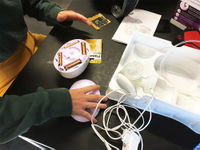 Step 1: Opening up the breast pump
Step 1: Opening up the breast pump
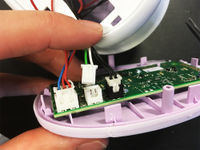 Step 3: Experimenting: what would happen if we change these cirquits?
Step 3: Experimenting: what would happen if we change these cirquits?
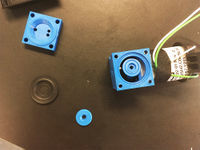 Step 5: The final stage of the opening up: the motor behind the pump
Step 5: The final stage of the opening up: the motor behind the pump
FINAL PROJECT
This digital craft project is in addition to my major 3.1 project "Flectere". With this assignment you had to create a tool which my colleague designers could use in any inspiring way. My tool includes water on a mirror, and therefore created a morphed image of any original image. The designer had to create the morph him or herself with their finger in the water. With my digital craft prototype i've made a system that once in a while drips a water drop on the water mirror. Therefore the designer doesn't have to use their hands but the dripper does it for you.
Year 2
Julian Schnabel - Abstract Painting
Abstract Painting (From The Huge Wall Symbolizing Fate’s Inaccessibility) (Abstract schilderij (uit een enorme muur die de ontoegankelijkheid van het noodlot symboliseert))
Julian Schnabel (in 1980)
Net als bij het rode schilderij gebruikt Schnabel geen schilderslinnen maar fluweel als ondergrond. Het zorgt voor een intens zwart waartegen de geschilderde partijen bijna lichtgevend afsteken. Hoewel hij het een abstract werk noemt, geeft de schilder in de ondertitel zijn inspiratiebron aan: een illustratie in een boek over vroege Duitse film, een shot uit Der müde Tod van Fritz Lang, waar een vrouw haar dorpsgenoten ziet verdwijnen in een ondoordringbare muur.
Research artikelen
Artikelen research Julian Schnabel: File:Julian Schnabel versie2 eind--klein.pdf
Assignment questions
3 key words that sum up the meaning of the work infinite black, texture, depth
3 textual quotes you have found that are interesting while investigating your work
“In an age when originality is dead and authenticity is considered a relic of the past, his paintings are Romantic throwbacks – bigger, more comforting versions of the real thing.”
“He is credited with playing an important role in bringing about “the return of painting” after painting had been declared “dead”“
“The problem with Schnabel’s work is that his marks and actions are made by someone who is easily satisfied by everything he does, which makes what he does an inadvertent parody of genius.“
3 textual lies you have made up that make the work more interesting
“His passion for painting on velvet all started while accidentally put a stain on the window curtains, from there he began to
experiment.”
“Before deciding if the velvet is really usuable, he wrapped himself with full body in the fabric and crawled on the floor, just to know for sure if the texture was the way he wanted it to be.”
“The painting is part of a bigger whole, there are 10 other mysterious paintings all over the world and if you combine those in a puzzle there is a hidden typographical message in the image.”
Colour research
Illustrator experimenten
Printed collage
Willekeurig online onderzoek
Gebruikmaken van een digitaal medium zoals Google Images om een willekeurig verloop van onderzoek te ontwikkelen. Uitkomsten waar ik geen directe invloed op heb.
Statement
Digital Craft statement
Voorafgaand aan deze practice was ik een beetje sceptisch of zelfs misschien angstig. Buiten het feit dat ik heel erg moest omschakelen vanaf vrij streng les te krijgen met opgegeven opdrachten naar autonoom toe. Ook omdat het Digital Crafts heet wekte ik voor mijzelf heel erg de indruk dat mijn digitale skills heel erg indrukwekkend moesten zijn, en in bijvoorbeeld coderen ben ik heel erg geïnteresseerd maar ben ik desondanks wel erg slecht. Gaandeweg door het project heen merkte ik dat ik in het begin inderdaad toch last had van het deel zelfstudie. Er was immers zo weinig les dat ik niet helemaal kon vastgrijpen wat er aan de hand was. Uiteindelijk is dat wel gaan werken en moest ik er gewoon in komen.
Ik vond het fijn dat deze practice heel erg gebaseerd is op een methode van werken, en dus denk ik dat mijn kracht juist ligt in het combineren van de mogelijkheden tussen digitaal en analoog. Digitaal hoeft daarin natuurlijk ook niet gelijk het meest technische/ingewikkelde te zijn wat er is. Ik denk juist dat het contrast en het experimenteren met deze mogelijkheden en methodes juist karakter aan een project kan geven, in ieder geval een toon van karakter waar ik wel naar streef om te vinden in een project.
In deze practice module moet ik eerlijk toegeven dat ik niet het meest digitale wat er mogelijk is ben gaan ontdekken, wat dat betreft heb ik meer analoog gewerkt met een toevoeging van digitaal. Voor andere projecten zou ik de grens hierin wel meer willen opzoeken en mijzelf ook meer willen uitdagen in wat ik kan behalen.
Reflective dossier
** Mijn reflective dossier deel over de practice Digital Crafts **
Digital Crafts // Autonomous practices
Als 2e practice wist ik dat ik een van de autonomous practices wilde kiezen. Voor Willem de Kooning heb ik mbo graphic design gedaan, waarbij de focus al heel erg commercieel is. Natuurlijk is dit op wdka anders, maar toch leek het mij een interessante uitdaging om autonoom te proberen.
Digital Crafts trok mij wel, met name door de combinatie van analoog en digitaal te werk gaan. Dit is een methode die ik in voorafgaande projecten ook al erg interessant vond.
Bij de assignment Fantastic Forgeries was het de bedoeling dat ik een werk uit het Boijmans koos om een kopie en een appropriation werk van te maken. Na lang struinen en heel lang te twijfelen heb ik gekozen voor “Abstract Painting” van Julian Schnabel. Dit werk is een schildering op zwart fluweel. Door het zwarte fluweel lijken de kleuren van de verf van de stof af te kaatsen, het zwart is op een bepaalde manier “extra zwart”. Daardoor trok het mij gelijk. Plus dit was ook wel een kenmerk waar ik wel mee kon experimenteren.
Voor de kopie ben ik juist verschillende dingen gaan proberen. In eerste instantie begon ik met (ongeveer) dezelfde kleuren ook te verven op fluweel stof. Achteraf ben ik meer digitale elementen gaan proberen. Zoals de schildering over te maken in Illustrator, en deze op deze manier juist zo te ontleden per laag. Ook heb ik juist het fluwelen materiaal vervangen door te printen op een ander materiaal: een soort rubber en een metalen/aluminium plaat. Dit brengt ook wel een verschillend resultaat teweeg.
Voor de appropriation liep ik een beetje vast in wat allemaal mogelijk was, uiteindelijk heb ik het teruggeschroefd naar de basis en gekeken naar de kleuren van het schilderij. Hier heb ik verschillende screenshots van gemaakt en met de hulp van google images search een database opgesteld van afbeeldingen die volgens een digitaal medium op deze kleuren lijken.
Inspiratie: studio moniker, het niet in de hand hebben van bepaalde resultaten en daarmee tot een willekeurig eindresultaat komen.
Willem Popelier: gebruik van andermans foto’s, in feite heb je daar ook geen invloed op en is het een kwestie van aankijken wat je met deze gegevens dan zelf kunt creëeren.
Om heel eerlijk te zijn denk ik dat Digital Crafts mij wel zeker trekt en interesseert. Juist omdat dit een methode van werken is die je altijd op een manier kan implementeren in je projecten. Wat ik wel lastig vind om echt goed een oordeel te kunnen veilen is dat er weinig lessen waren. Juist omdat de omschakeling van Area’s in decline naar Digital Crafts voor een groot verschil zorgden. Hierdoor voelde het toch alsof ik nog niet heel goed heb kunnen meemaken wat projecten in deze practice kunnen voorstellen. Desalniettemin ben ik zeer positief gestemd achteraf.

